Sharing Features
Pydio Cells delivers file sharing and collaboration in a way that is familiar, comfortable and intuitive for users of modern collaborative apps. It lets users decide how to share files and information, based on knowledge of their own teams, workflows and working patterns. This end-user freedom also takes the responsibility of creating effective workspaces away from overburdened administrators.
Sharing with Public links
You can share files or folders using a public link. To create a public link, choose the folder/file that you want to share and right click on it: a menu appears. Click on Share, it opens a configuration popup:
Click on Enable Public Links to enable them.
You now see these new fields:
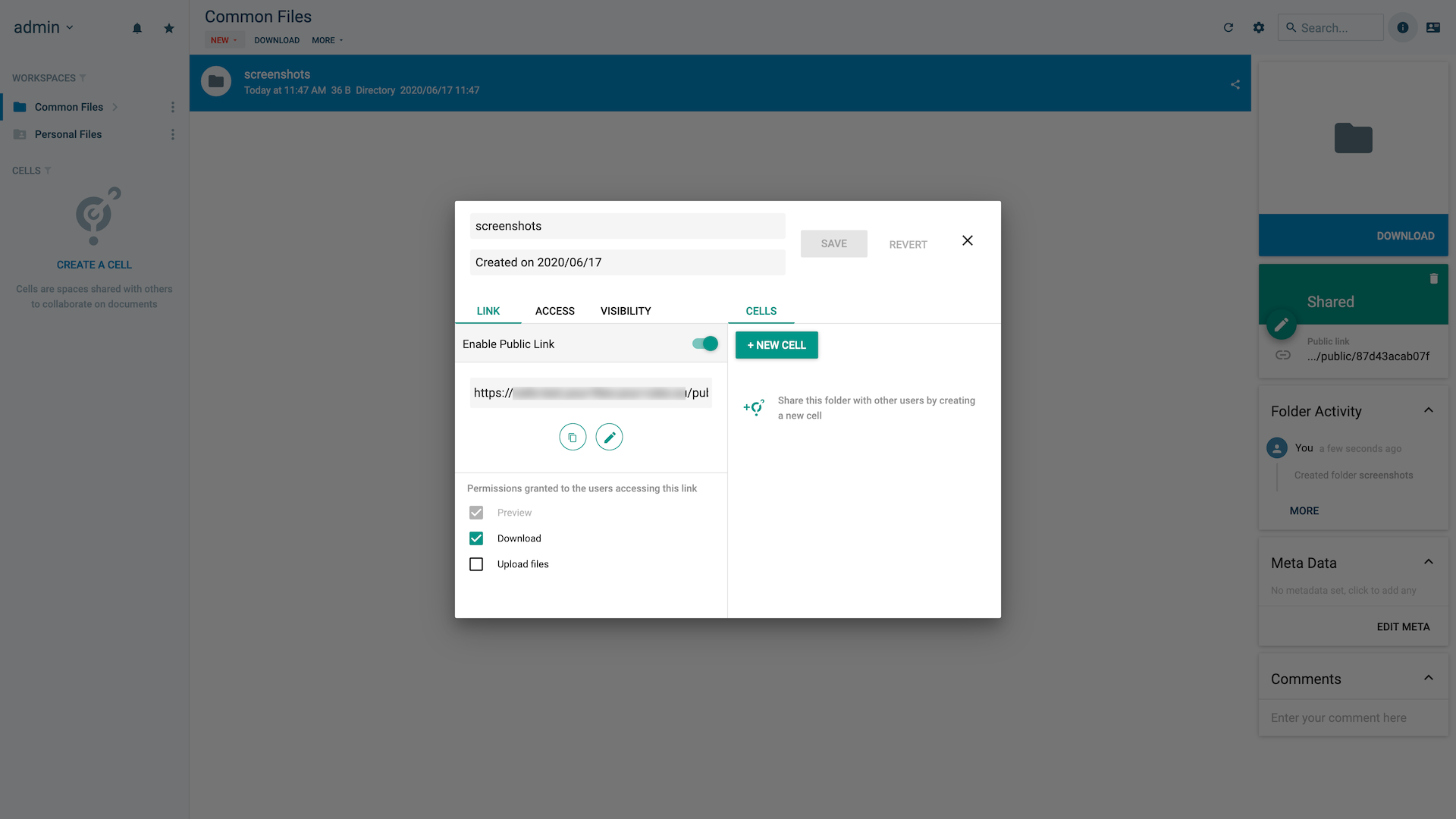
- Link Label: the label of your link; you have a menu displaying all your public links. It is easier to recognize them with a label)
- Link Description: filled by default with the creation date, this is displayed in the various public layouts seen by the end-user that clicks on the link. You can change this to provide a more adequate description of the content.
Then, there are 3 different tabs:
- Link: This is where you can get your link, you can also choose the permissions that users have on this share.
- Access: You can choose if you want to put a password an expiration date for the link, a limited number of downloads and the layout of the GUI when people follow the link.
- Visibility: You can choose to whom this link is visible on the shares menu.
Note: The generated link URL is computed from your current web access. If you are using multiple URLs to access to Cells, you can force Cells to use only one of them for all public links. Go to Cells Console > Main Settings panel and also refer to Configure Cells URL in this documentation.
Sharing with other users using Cells
The Cells concept will be familiar to modern workers used to collaborating on "channels" within popular group-chat applications. Cells can be shared internally or externally to the organization, with users able to add new individuals and groups to the Cell. In-app, instant messaging within each Cell, provides a focused channel for group communication around the theme.
End-users can create their own, flexible Cells: combining files and folders from any location, or picking users from their address book.
Creating Cells from folders/files
When using the Share action (either in right-click menu or in the information column), one can directly add a folder or a file to an existing cell, or create a new cell with the current folder.
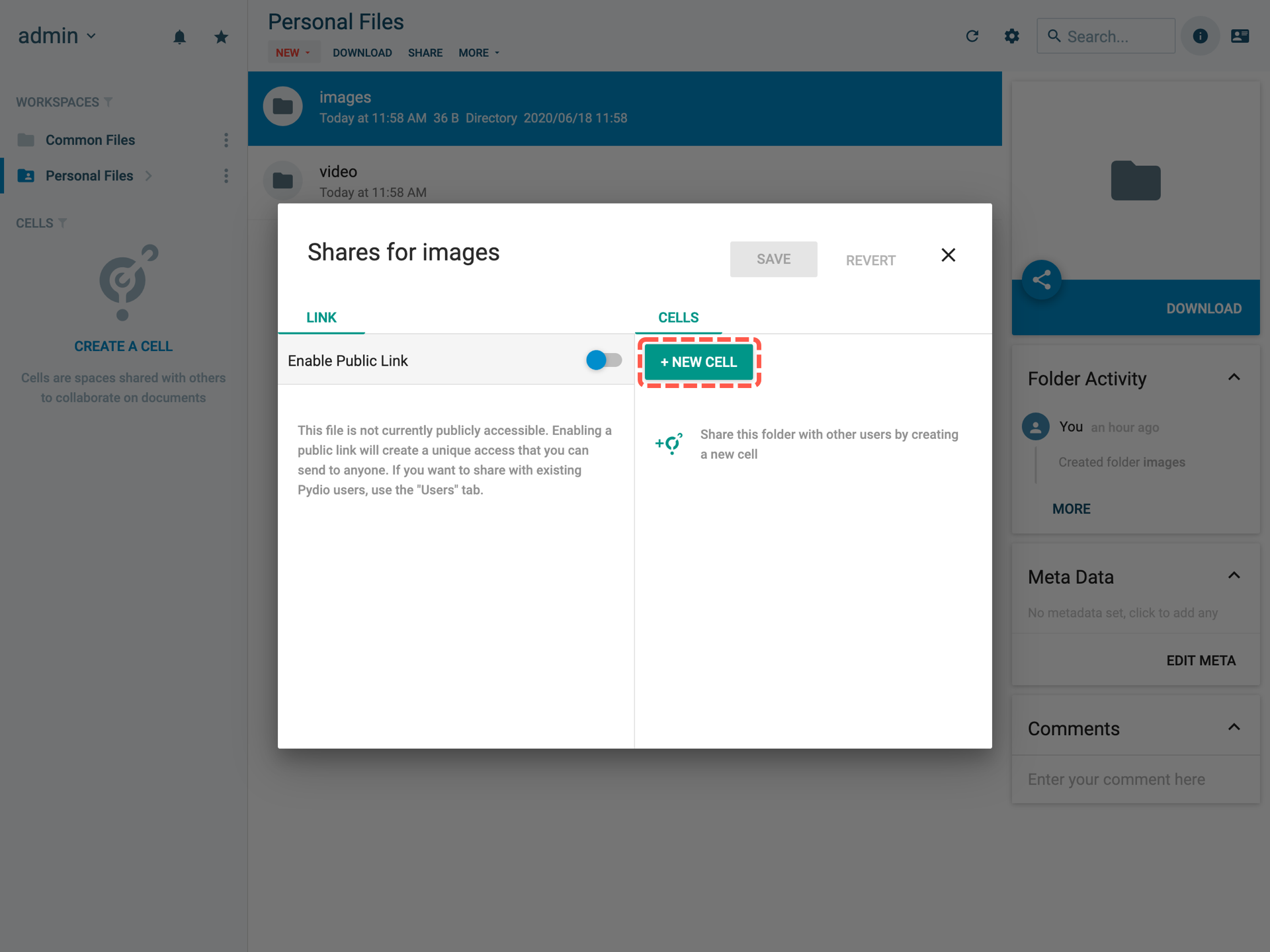
Creating Cells from scratch
When using the "Create Cell" button from the left-hand panel, the following menu is displayed:
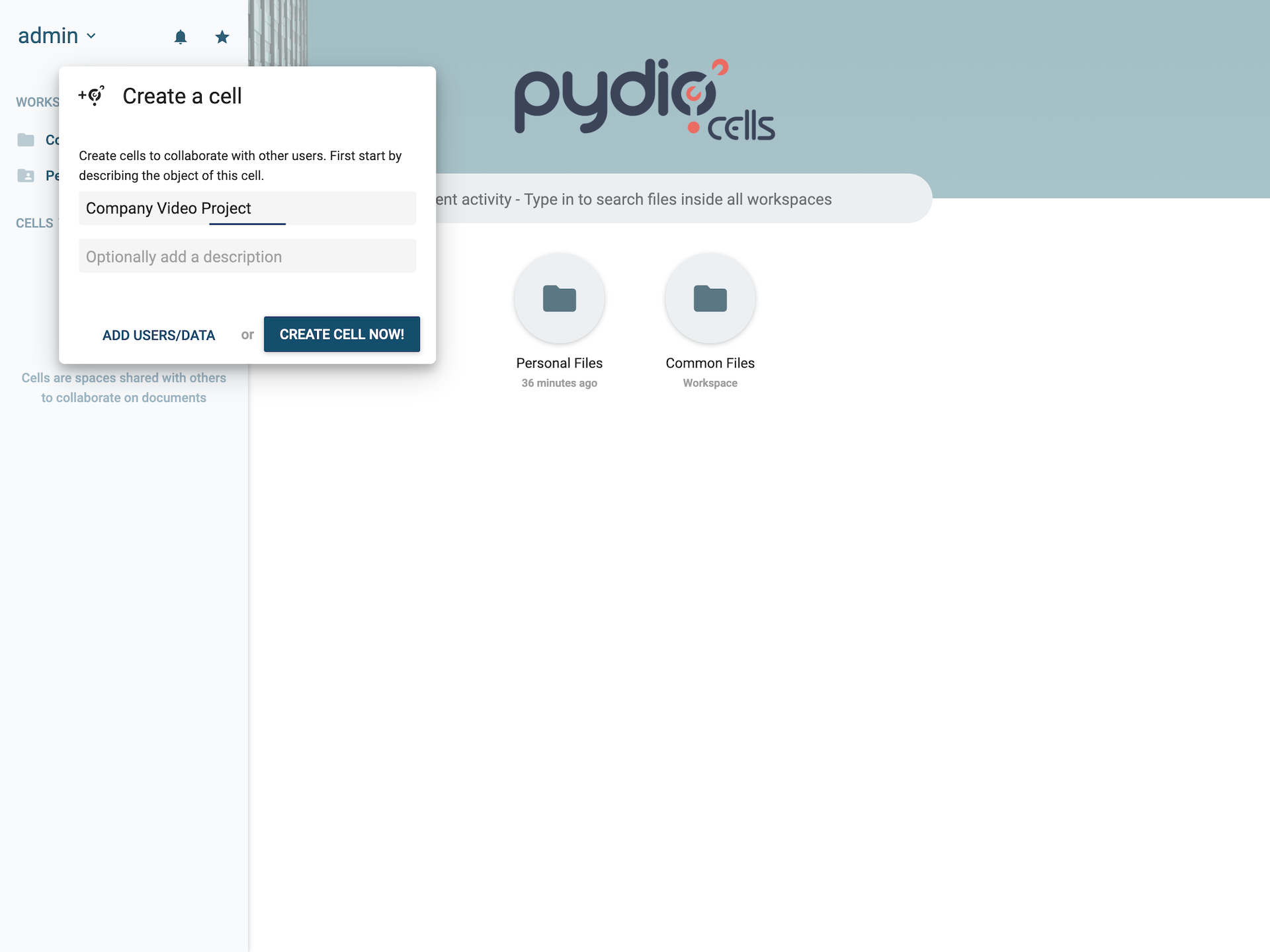
- Title: the name for the cell.
- Description: add a short description of your cell to inform users about the topic.
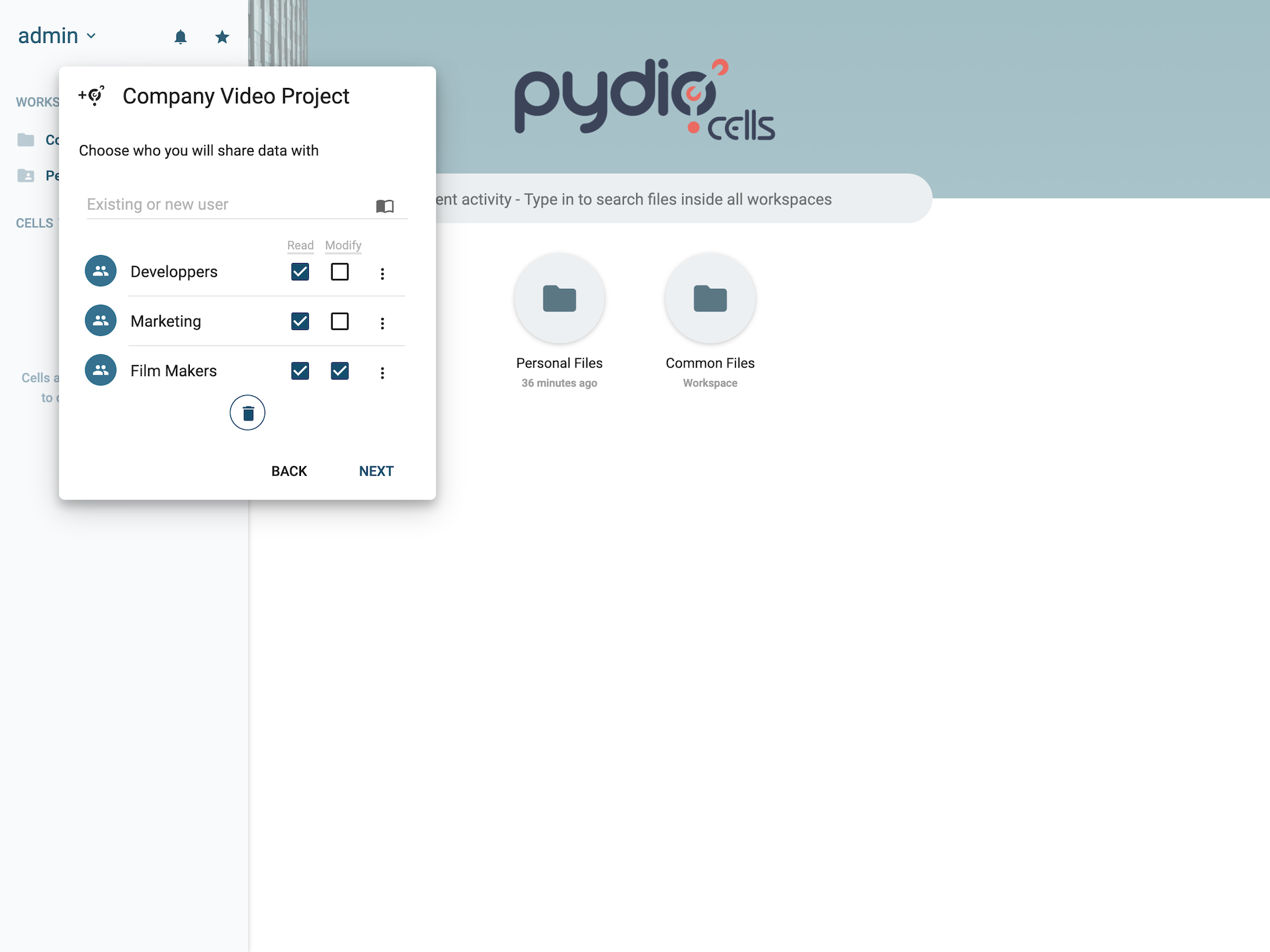
- Choose who you will share data with: Pick a single or multiple groups/users that will have access to this cell. You can also choose how they can interact within it.
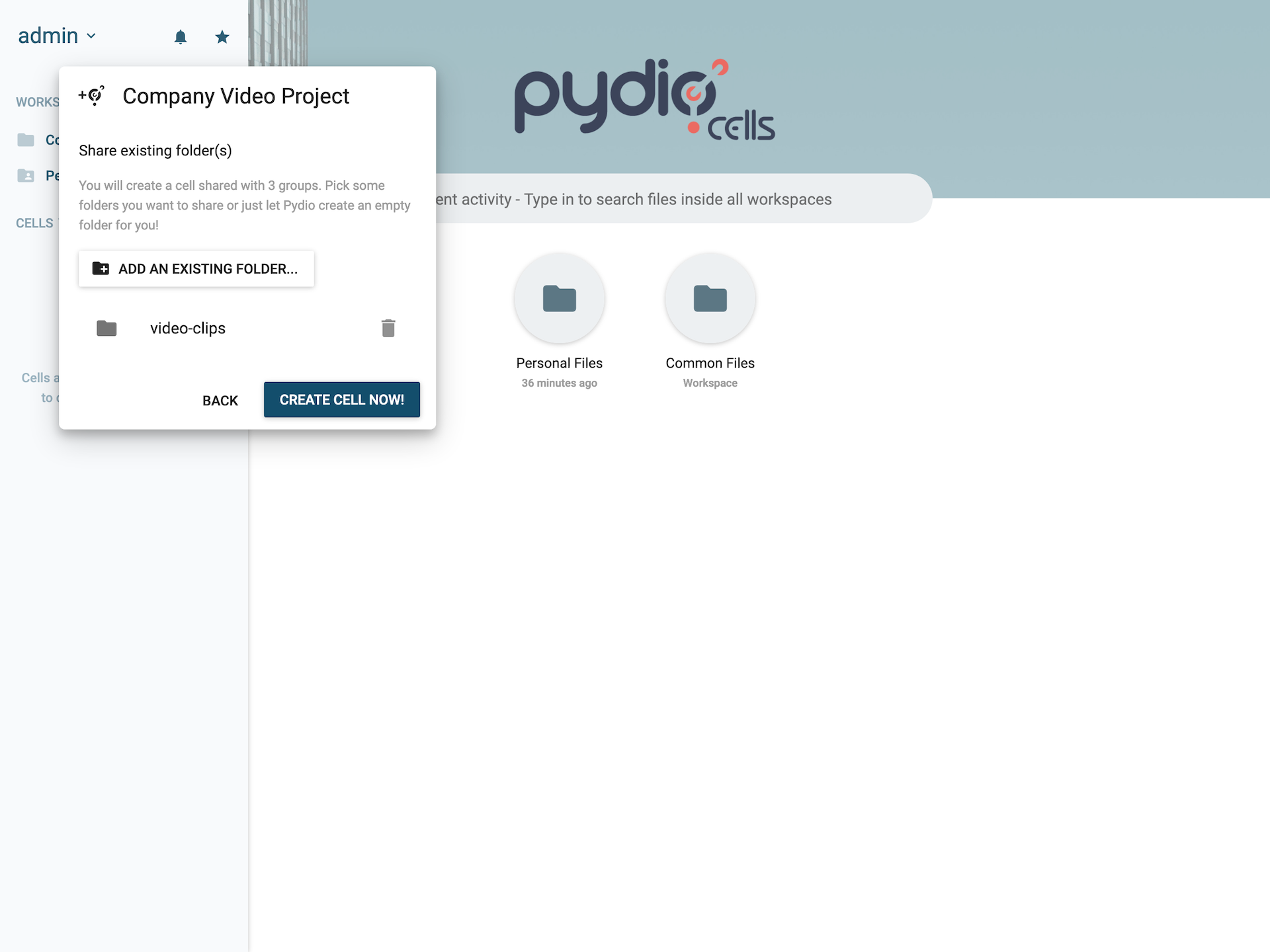
- Add an existing Folder: Pick an existing folder from any of your current workspaces, to feed the Cell with data. You can also leave the cell empty and a dedicated folder will be created on the underlying storage.
Click on Create Cell Now! to finish the process.
Creating Cells from Address Book
When browsing the Address Book in the right-hand column, clicking on the vertical dots for a user opens, providing following options:
- Create a cell with this user
- Add user to current Cell: if you are currently inside a Cell
- Remove from current Cell: if the user is part of the current Cell and you have the right to edit this Cell.